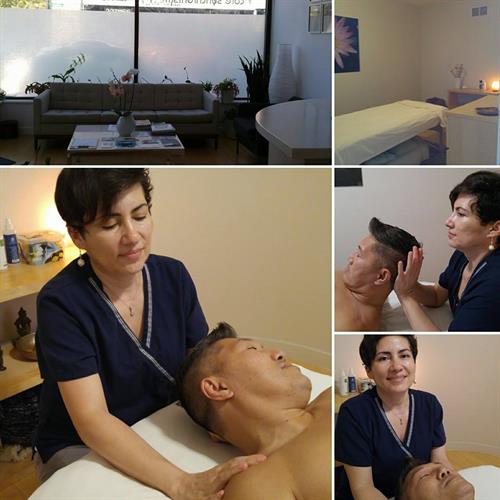One of the most common physical problems, up to 90% of adults in the Unites States will experience a headache each year. Headaches are pain caused by any number of sources. Muscular tension, vascular spasm and dilation, and chemical imbalances all can contribute to headache. Headaches only rarely indicate a serious underlying disorder.
How are they recognized?
Tension-type headaches are usually bilateral and steadily painful. Vascular headaches are often unilateral and have a distinctive “throbbing” pain from blood flow into the head. Headaches brought about by Central Nervous System injury or disease are extreme, severe, and prolonged. They Can have a sudden or gradual onset.
Types of headaches
Tension-Type headaches. By far the most common type of headache people experience (90-92%).
Vascular headaches. These include classic and common migraines, cluster headaches and possibly sinus headaches.
Chemical headaches. The triggers for these headaches can be any kind of chemical disturbance, including low blood sugar (“hunger headache”), hormone shifts, and dehydration.
Sinus Headaches. They have to do with too much fluid in the skull.
Traction-inflammatory headaches. These are the rarest type of headaches, and the most dangerous: they are indicative of severe underlying pathologic conditions such as tumors, aneurysm, hemorrhage, or infection of the central nervous system.
Tension Headaches. Are headaches triggered by mechanical stresses that initiate the central nervous system changes in the serotonin levels and blood vessel dilation. The average head weighs about 18 to 20 pounds. The whole mechanism of the neck is kept in balance by tension exerted by muscles and ligaments around the neck and head.
TMJ Headaches
Symptoms
In mild to moderate tension headaches, there is a constant, band-like pain or pressure that lasts from 30 minutes to all day. Tension headaches tend to be moderate or mild and are rarely severe. Unlike migraines they are not usually unilateral, throbbing or associated with light and sound sensitivity or nausea and vomiting. Other features of tension headaches may include: These are almost too numerous to list, here are few major causes:
*Headache upon awakening
*General muscle aches
*Difficulty falling asleep and staying asleep
*Chronic fatigue
*Irritability
*Disturbed concentration
*Mild sensitivity to light or noise
*Occasional dizziness
What are the Triggers?
*Muscular, tendon or ligament injury to the head or neck structures.
*Simple muscle tension in the sub occipital triangle or the jaw flexors.
*Subluxation or fixation of cervical vertebrae can irritate ligaments or causemuscle spasms.
*Structural problems in the alignment of the cranial bones.
*Trigger points in the muscles of the neck and head can refer pain all around the head.
*Eyestrain: chronic contraction of muscles in the eye to focus
*Any kind of ongoing mental or physical stress can change postural and movement patterns, which will lead to muscle spasm, subluxation, fixation and so on. Poor ergonomics, especially in repetitive work situation, are frequently the culprit behind chronic tension headaches.
How can Neuromuscular Therapy help?
It depends on what kind of headache you have. If it is related to a serious underlying pathologic condition, or to a bacterial or viral infection, any massage is obviously inappropriate. Vascular headaches are so extreme and painful that we prefer to wait until the acute stage has passed to treat you. However, for the most common tension-type heachaches, massage gives the perfect relief.
We address the elements that cause muscular pain.
*Ischemia—lack of blood flow to soft tissue.
*Trigger Points—irritated points in the muscles that refer pain
*Postural Distortion—imbalance of muscular system
*Biomechanical Dysfunction—Imbalance resulting from faulty movement.
Addressing shortened muscles and trigger points (irritable spots that refer pain elsewhere) promote healing and make restrictive scar tissue more pliable in the muscles and ligaments of the neck. When muscles relax and become more pliable, pressure lessens on nerves and blood vessels. Session consist of general warming of shoulder and neck muscles, soft tissue lengthening and gentle traction, locating and deactivating trigger points, stretching shoulder and neck muscles.
SELF HELP Strategies
Self-Help strategies can help you t o cope with your headaches However, they will “probably” only have minimal effect, but the focus is on lowering the pain threshold or preventing another one from beginning. If you’re not sure what triggers your headaches, keep a headache diary. Include details about every headache. When did it start? What were you doing at the time?
Exercise—Regular exercise can greatly reduce your risk of headaches,

